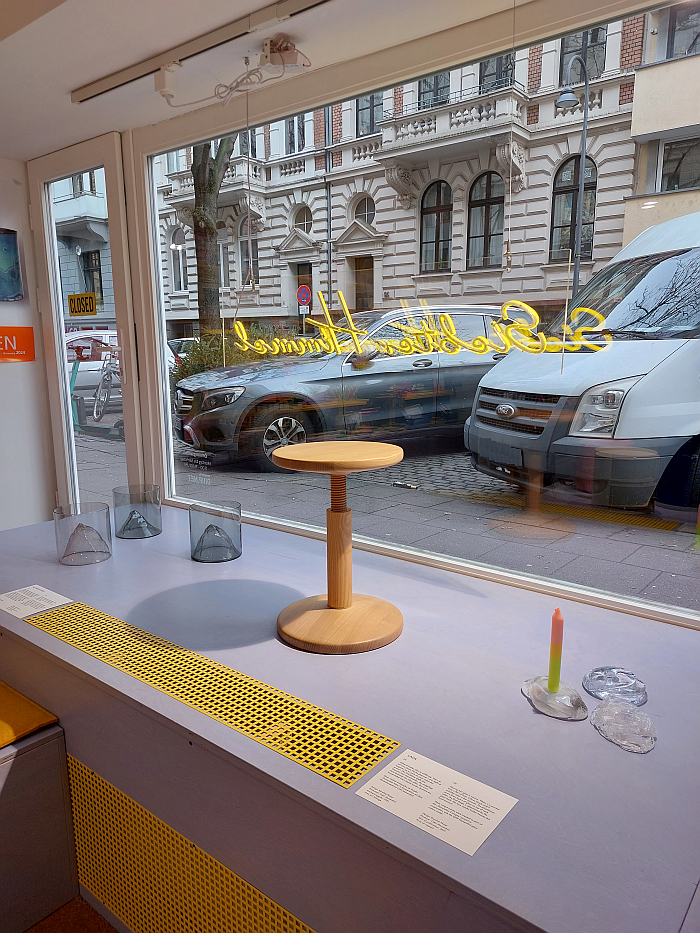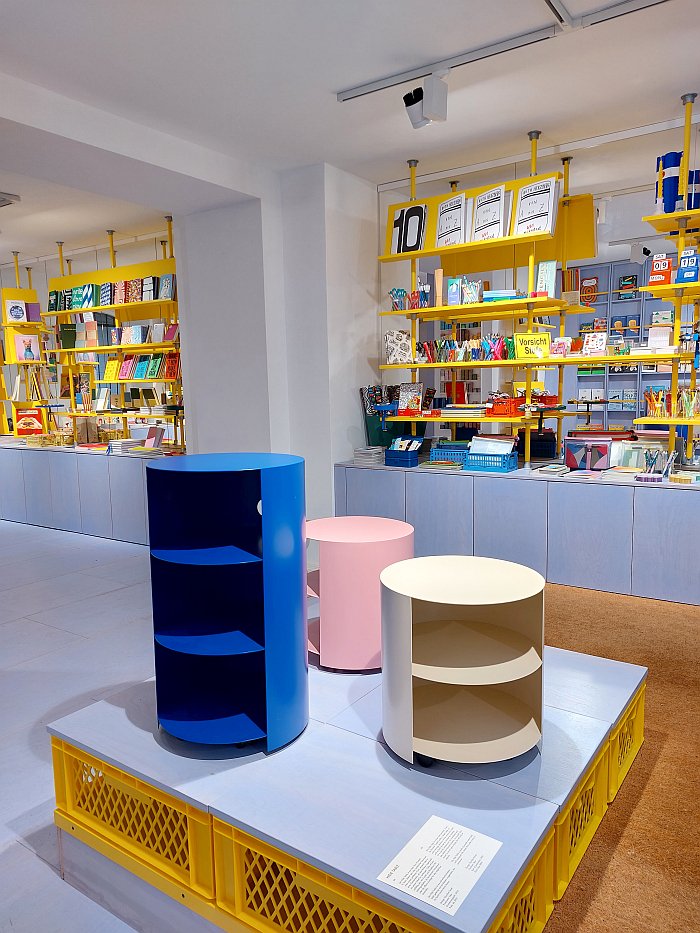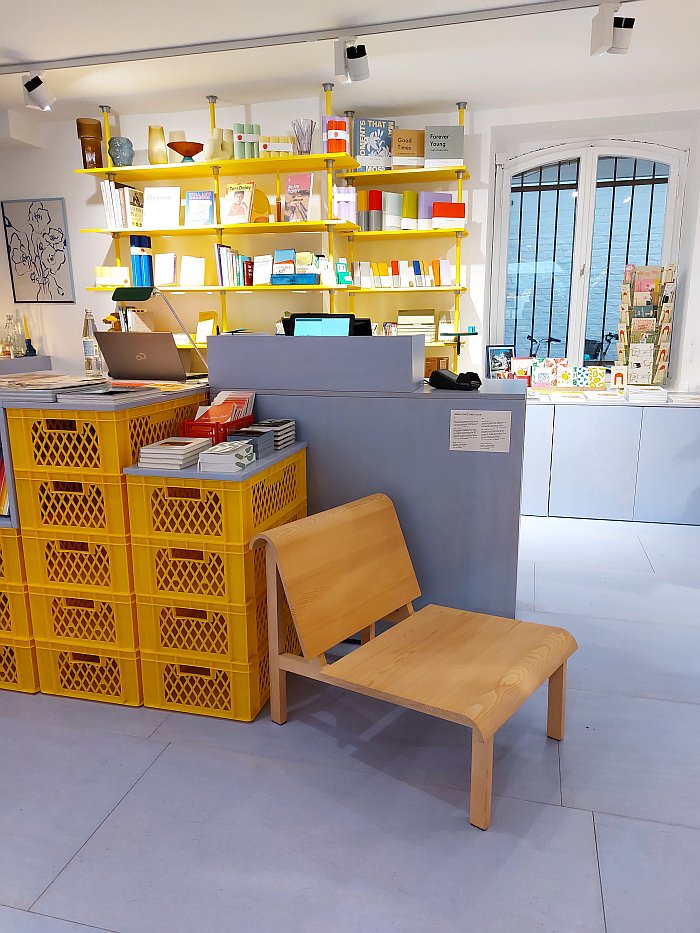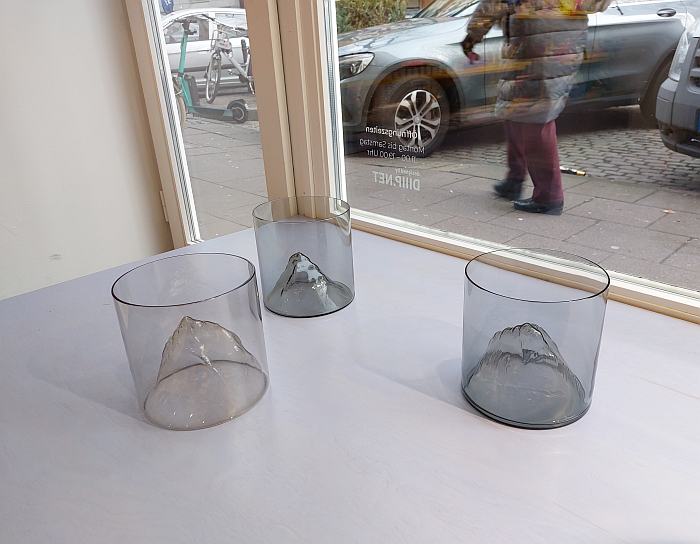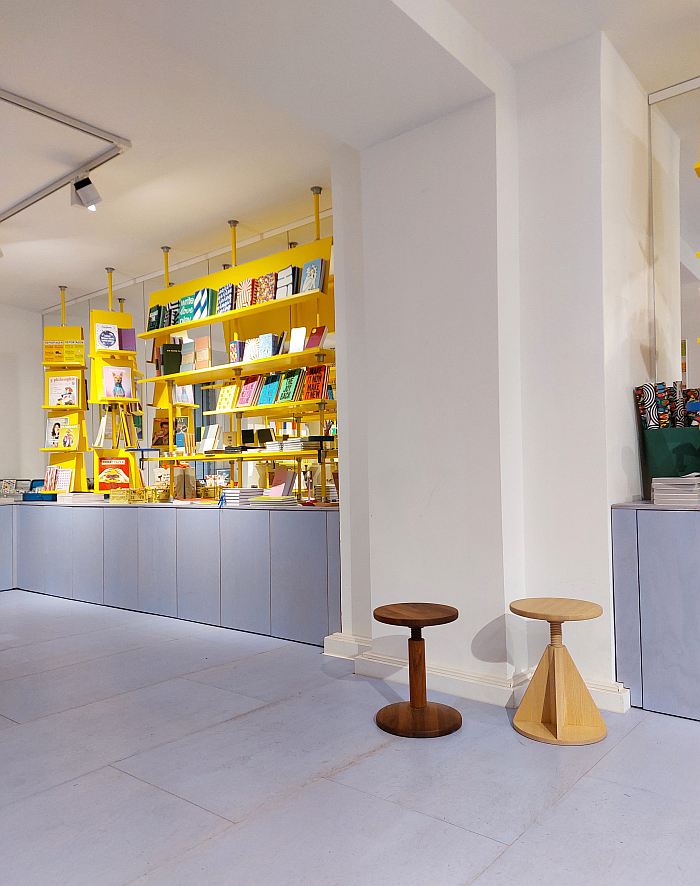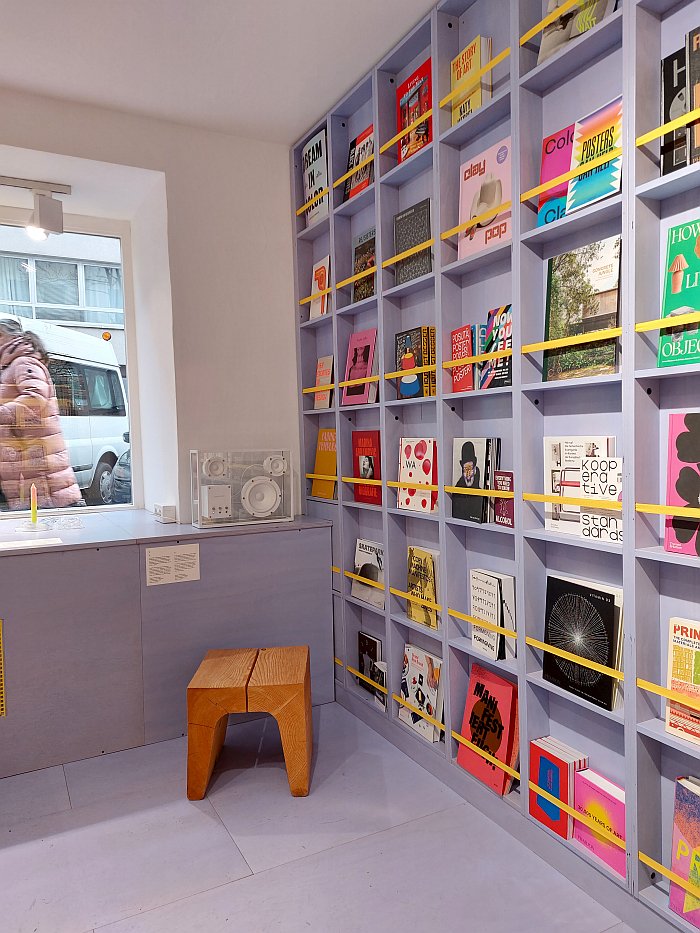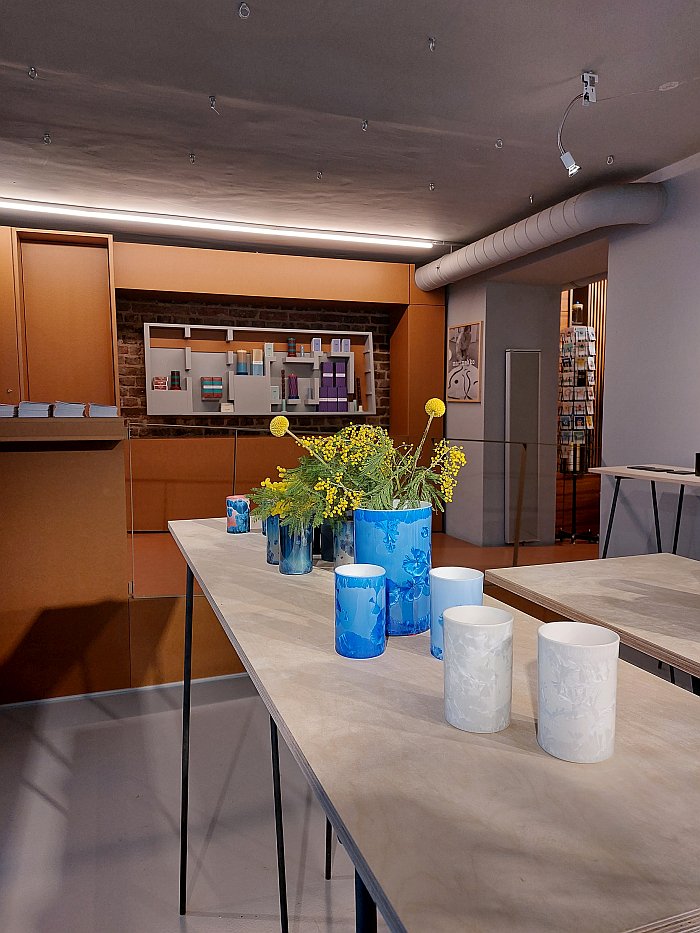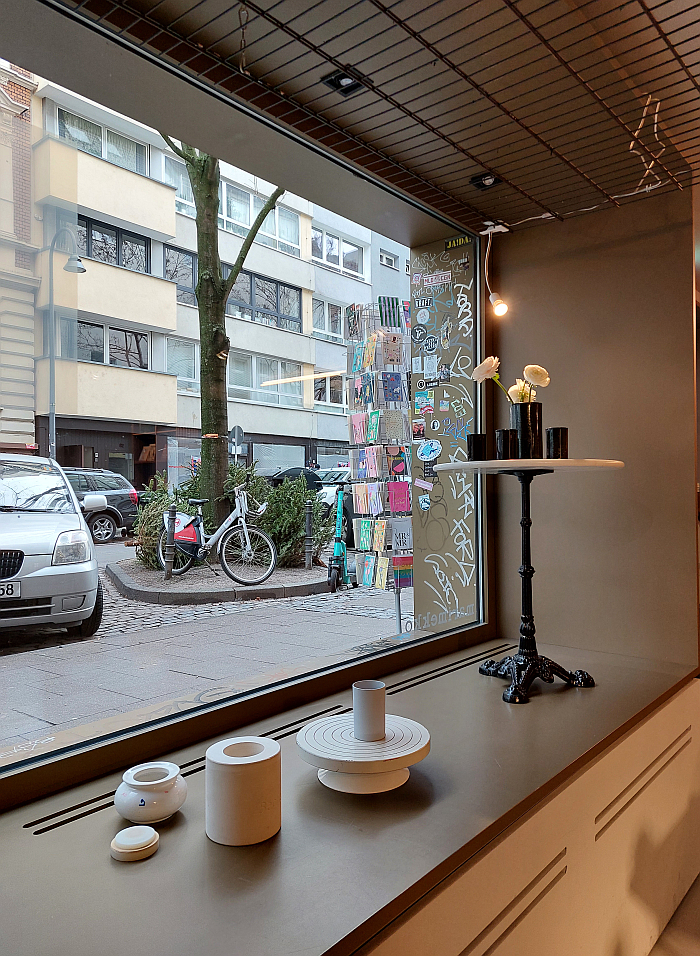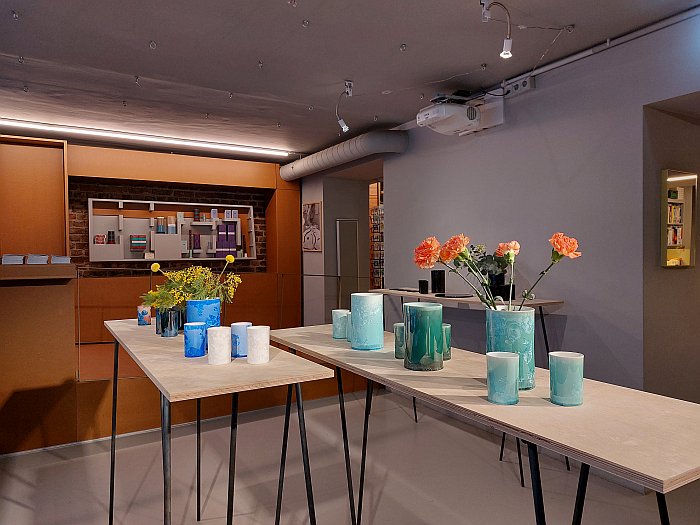
We're sure Karoline Fesser won't mind us observing that she is a seasoned regular at Cologne's Passagen Interior Design Week, having made her debut in, by our calculations, 2012; and if you do mind Karoline, sorry! But, we've gone done it now!
Yet despite the regularity of her appearances, there is never a sense of déjà vu, never that dull lifeless in a room haunted by the curse of repetition; rather every year bringing something new and fresh. Yet always something true to Karoline.
As at Passagen 2024 where Karoline is presenting the project Chemical Connection at Siebter Himmel in the city's, self-proclaimed, Belgian Quarter. Not Belgian. A project developed by Karoline together with Ceramic Engineer Karl Weber which concerns itself with crystal porcelain glazes; specifically an investigation of combining different glazes with metal oxides on coloured porcelain.
We'll save you the chemistry... you're very welcome, our pleasure... and focus on the results, which express themselves as apparently arbitrary, apparently random, patterns; patterns which are reminiscent of forms borrowed, appropriated, from the realms of botany, cosmology, mycology, crystalology. And Art Nouveau. Not that we're accusing Karoline of having gone all Art Nouveau... Heavens Forfend!!! However, several, numerous, of the expressions on show at Siebter Himmel, for all those more reminiscent of flora of varying types, are ones that you could swear blind you'd seen on a vase or decanter from Johann Lötz Witwe, Emile Gallé, or any of their like-minded contemporaries. But you haven't. And they are very different beasts, different plants, not least because whereas the Art Nouveauists actively sought to evoke the floral world, had the floral world as one of their central inspirations and motivations, the florid forms of Chemical Connection aren't the raison d'etre of the project, rather the florid, and cosmological and crystalline and fungal forms, are those which result naturally from the glazing process(es).
Are the result of magic.
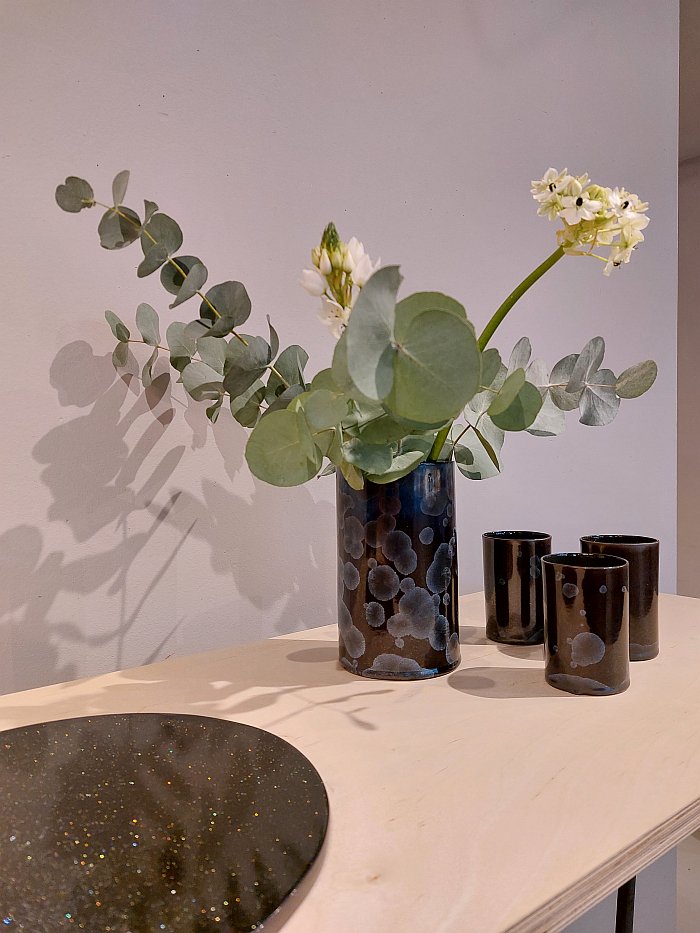
OK, not magic.
And also are neither random nor arbitrary but rather, one must presume, are an immutable consequence of mathematics. Forms that are as they must be, forms which can be no different. As are the corresponding, the analogous, the actual, forms in and of nature and the cosmos. Thus a reminder that the natural and physical world aren't entities completely under our control, no matter how much we deceive ourselves they are, and how much the Art Nouveauists actually believed it to be; rather the greater part occurs without us even realising, without being in a position to comprehend it is happening. A reminder of the governing of life on earth, and the organisation and operation of the cosmos, by mathematical models and rules we don't know, don't know how to identify, don't know how to notate, that helps elucidate that clever as we all like to think we are, as a species we know absolutely nothing. A reminder of how little we know, a reminder of how thoroughly insignificant and inconsequential the human species is, a reminder of human existence in an integrated system outwith our control, delivered in a most pleasing and practical and simple beaker and/or vase.
And also different because whereas the Art Nouveauists were seeking to make objects, were seeking to use natural motifs as the basis for objects, products, appropriate and meaningful for contemporary society, we're seeking to capture spirits and desires of the age in domestic goods, Chemical Connection is, primarily, about the research, about trying out novel approaches to porcelain glazing and seeing what results, and where those results subsequently lead one, is speculative, and open-ended. Yes, it could lead to products, and that on show at Siebter Himmel very much implies it could and will. The results and expressions thus far realised presenting themselves with not only the suggestion of a physical depth beyond that which you know is possible, and which, literally, draws you in, but also presenting themselves with an extreme reduced rationality, and that despite their highly, unmissable, ornamental, decorative character, and that, arguably, because of the forms' genesis in the simple complexity of mathematics, something which also allows the works to posses an honesty and integrity that the Art Nouveauists rarely achieved, seeking as they were to present that which wasn't natural as nature. Chemical Connection presents that which is natural as if it were artificial. And also, or perhaps exactly therefore, forms and patterns which present themselves with an agency beyond the physical and the practical, are forms and patterns with an instant, instantaneous, and very satisfying appeal, are highly engaging porcelain surfaces which bequeath otherwise mundane, banal, objects a heightened level of interaction, bring in a non-tactile, non-technical functionality, an immaterial usability..... were deliberately shying away form all forms of the word 'emotion', because we don't believe that that is really the correct phrase in this case, but there is a tangible and satisfying non-physical interaction.
An interaction that, arguably, embodies spirits and desires of the age every bit as much as the Art Nouveauists did; but which replaces the direct repetition of the physical expressions of nature, a in many regards naive approach to relationships with the natural world, with expressions that confirm the complexities we all know to be out there, those complexities we all try to blend out from daily life, yet which we all kind of know can help us, if we can learn to work with them rather than seeking to master and harness them. If we can let go of the human ego for the common good.
And thus speculative research that could lead to products, could lead to objects as appropriate and meaningful for contemporary society as those of the Art Nouveauists, arguably, were.
But that's not the motivation.

Chemical Connection isn't the first porcelain glaze related project we've seen, not by long shot, it is a popular and recurring subject amongst creatives of all hues; but there is something very pleasing and very satisfying in the manner by which, we're assuming, it produces, enables, empowers, an infinite number of non-repeatable results from nothing more than the unfaltering, inalterable, mathematical rules of the universe, and the implication therein of the possibility of employing such a system, or systems, to enable the realisation of an infinite collection of unique objects via large scale serial production, that craft sensibility at the industrial scale for an age demanding of more than the profit driven monotony of capitalism, as discussed from and by The Series as presented at Vienna Design Week 2024. Whereby one must also add that while the process(es) work, as can be appreciated, very satisfyingly on simple forms, there is still a (publicly) unanswered question as to how they work on more complex forms. Potentially better, potentially worse. That may or may not be research Karoline and Karl have already undertaken, is we suspect, hope, research that will be undertaken. And whose results we very much look forward to seeing. Regardless of how they turn out.
In addition there is also something very pleasing and very satisfying in what Chemical Connection can teach us about the roles and function of porcelain glazes; that elucidation that glazes aren't just decorative, aren't just technically functional, that they are also emotionally functional, have an immaterial agency. And thus also a reminder that the (hi)story of ceramics is also a (hi)story of surface treatments, a theme also discussed by and from, for example, Haël. Margarete Heymann-Loebenstein and her workshops for decorative ceramics 1923-1934 at the Bröhan Museum, Berlin, for all in context of the cooperation between Margarete Heymann-Loebenstein and Franz Eggert, between a designer and a technician. And thus helping one approach better appreciations that while formal positions and material developments have without question greatly influenced the path of ceramics, so to have novel glazes, novel glazing techniques, and that not least because glazes have agency in context of how we respond to and interact with ceramics beyond the purely physical, and thereby introduce, enable, an extra layer of interaction. As Chemical Connection ably elucidates.
And is also very pleasing and very satisfying because it is, in effect, a union of craft, design and science, and thus an excellent example of the undeniable truth that while all three are without question important on their own, together they can be something bigger than the sum of their parts. Which isn't something we think the Art Nouveauists understood. Were even interested in.
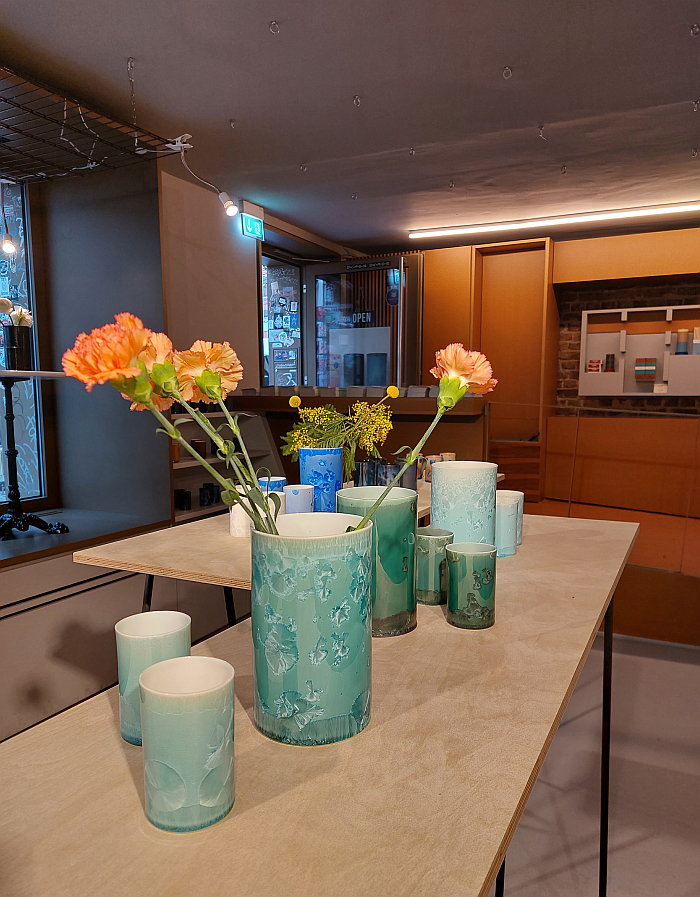
In addition to Chemical Connection Siebter Himmel is also staging a small review of some of Karoline Fesser's other works, it frankly would be daft not to; a presentation that features the Hausberg Vase and Lava candleholder developed in context of a project with the CIAV glass culture centre in Meisenthal, France, the All Wood Stool and Hide side table both through HEM, and the Urban Forest lounge chair and U stool/bench/side table both realised in cooperation with carpenters from Werkraum Bregenzerwald, Austria.
Objects which are not only all charming, communicative and responsive characters in their own right, but which allow one to better appreciate Karoline's positions, approaches and relevance. And her long association with the Passagen Interior Design Week......
Chemical Connection, and the brief review of Karoline Fesser's work, can be viewed at Siebter Himmel, Brüsseler Str. 67, 50672 Cologne, until Friday January 18th.
Which means by the time you read this it may have ended, the harsh reality of any design week being that they are over before they've started. Certainly before we can get round to posting anything. However more information on Karoline Fesser and Chemical Connection and the rest of the portfolio, can be found at www.karolinefesser.de
